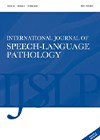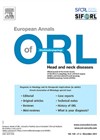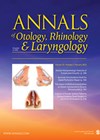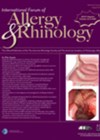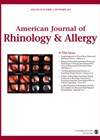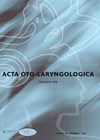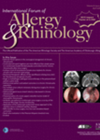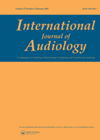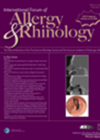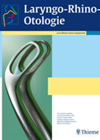
Journal Reviews
How much does it cost to simulate speech and language therapy placements?
The Royal College of Speech and Language Therapists report that 20% of speech and language therapy positions are unfilled in the UK. Consequently, there is an urgent need to offer as many training courses as possible to fill these gaps....
Still not smelling
Post-Covid anosmia/hyposmia is a troublesome persistent symptom for lots of patients. Management is still elusive. This was a nationwide survey of ENT practitioners. Of the 715 surveyed members, only 7.4% responded. Most performed a nasal endoscopy, 60% ordered an MRI...
Are quinsies worth draining?
Recent data is providing accumulating evidence that treatment failure in the management of peritonsillar abscesses (PTAs, aka ‘quinsies’) is similar when these are managed with medical treatment (MT) alone versus MT plus surgical drainage (M+ST). However, in the absence of...
Location, location, location: How to get the steroid where you need it, in chronic rhinosinusitis
What almost all current guidelines on chronic rhinosinusitis have in common is the importance of intranasal steroid (INCS) use. However, it is increasingly understood that the efficacy of INCS depends on their efficient delivery to the point of need, i.e....
Sinus implants to treat recalcitrant polyps
It is well established that the burden of chronic rhinosinusitis on healthcare costs and patients’ quality of life is high, and that current mainstream treatment options of oral or topical steroids are not without problems. This paper compares two RCTSs...
Intratympanic steroids - to give or not to give?
The treatment of idiopathic sudden sensorineural hearing loss (ISSNHL) is controversial and different modes of steroids have been tried without any universal consensus. Various authors have reported combined oral and intratympanic steroid therapy in SSNHL, with consistent results in several...
Method of delivery: all topical nasal corticosteroids are not made equal
There is an increasing body of evidence that the role of surgery for chronic rhinosinusitis is to facilitate the delivery of topical medical treatment – most notably, topical corticosteroids. Two recent studies, one using flow dynamics and another one examining...
How to talk about hearing aid costs?
Money is always a controversial topic if discussed in reference to healthcare. This study raises the interesting topic of difficulties when it comes to discussing the costs of hearing aids with customers. Sixty-two audiological appointments were recorded and discussions concerning...
Poor allergic rhinitis control increases the overall costs
Allergic rhinitis and asthma are common and can have significant effects on quality of life. However, not many studies have focused on the economic effects. The authors of this study performed a large-scale (over 60,000 patients) observational study to analyse...
IV dexamethasone versus LA infiltration during paediatric tonsillectomy
Postoperative nausea and vomiting following tonsillectomy is important to control for improved oral intake and satisfaction following surgery. Optimal management is still debated. This team from Beirut conducted a randomised double blind clinical trial comparing the effect of intravenous dexamethasone...
FESS for recurrent acute rhinosinusitis: at last, some data
As noted in both the EPOS 2012 and in the (more recent) ICARS 2016, there is a paucity of evidence on the effectiveness of surgery for recurrent acute rhinosinusitis (RARS). The authors used a control group of patients with CRSsNP,...
Inpatients versus Outpatient: septoplasty cost analysis in Germany
Although the vast majority of septoplasties in the UK are performed as day surgery procedures, the authors of this article highlight the differences in healthcare in Germany. The authors calculated a yearly cost reduction of 180 million euros if the...

